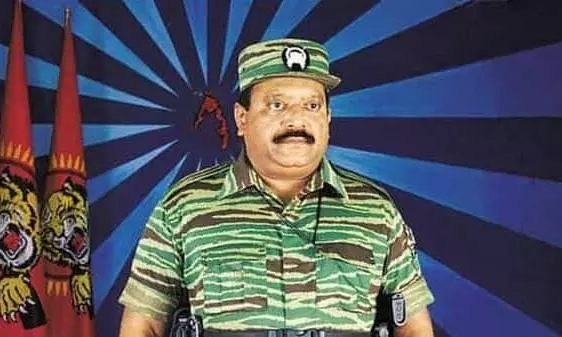
- Home
- India
- World
- Premium
- THE FEDERAL SPECIAL
- Analysis
- States
- Perspective
- Videos
- Sports
- Education
- Entertainment
- Elections
- Features
- Health
- Business
- Series
- In memoriam: Sheikh Mujibur Rahman
- Bishnoi's Men
- NEET TANGLE
- Economy Series
- Earth Day
- Kashmir’s Frozen Turbulence
- India@75
- The legend of Ramjanmabhoomi
- Liberalisation@30
- How to tame a dragon
- Celebrating biodiversity
- Farm Matters
- 50 days of solitude
- Bringing Migrants Home
- Budget 2020
- Jharkhand Votes
- The Federal Investigates
- The Federal Impact
- Vanishing Sand
- Gandhi @ 150
- Andhra Today
- Field report
- Operation Gulmarg
- Pandemic @1 Mn in India
- The Federal Year-End
- The Zero Year
- Science
- Brand studio
- Newsletter
- Elections 2024
- Events
- Home
- IndiaIndia
- World
- Analysis
- StatesStates
- PerspectivePerspective
- VideosVideos
- Sports
- Education
- Entertainment
- ElectionsElections
- Features
- Health
- BusinessBusiness
- Premium
- Loading...
Premium - Events

Tamil Tigers were led by men who had no long-term vision or strategic clarity; Prabhakaran led LTTE to a destruction no one had thought was ever possible
Weeks before the Tamil Tigers got military obliterated, a despondent Pottu Amman, the LTTE intelligence chief, confided to some of his startled colleagues that there were three main reasons why the prolonged armed struggle for an independent Tamil Eelam appeared to be crawling to its very end.
One, he said, was the decision by the Liberation Tigers of Tamil Eelam (LTTE) in 1990 to force the entire Tamil-speaking Muslim community to quit Sri Lanka’s north with just Rs 150 and the clothes they were in.
Whatever else they possessed, they were told, had been earned in Tamil Eelam and so must be left behind. Overnight, tens of thousands of Muslims were pauperized and turned homeless.
Forced to fight war
The second reason for the LTTE’s irreversible military setback, Pottu Amman confessed, was the forcible conscription of young Tamils to fight the Tamil Eelam war against their wishes.
Since the 1990s and until its military rout in 2009, the LTTE snatched thousands of Tamil boys and girls mostly from impoverished families in the eastern province, often in their early teens. The children were literally abducted from streets, homes and temple festivals.
Hundreds of these children perished after being hurriedly trained and sent to the frontline. In the process, the LTTE and its leaders earned the curse of innumerable Tamil parents who were too terrified of the Tigers to resist the monstrosity.
Rajiv Gandhi assassination
The final factor which had rained misery on the Tigers, Pottu Amman said, was the 1991 assassination of former Indian Prime Minister Rajiv Gandhi by a suicide bomber – a diabolic killing the Tigers initially and repeatedly denied committing but for which its theoretician, Anton Balasingham, publicly sought forgiveness months before he passed away in 2006.
Rajiv's killing turned the once sympathetic Indian state into a resolute foe.
No one knows for sure what happened to Pottu Amman at the end of the war in Sri Lanka although most people believe he perished in the fighting. His body was, however, never found.
Behind it all
When I sought to know if Pottu Amman did die, one of his former associates in the LTTE intelligence told me late last year that he was sure his boss too was killed. “But if he is alive, the only country he could be still living must be India," the former associate said.
It does not matter if Pottu Amman is alive or dead. And it is certainly not correct that the three factors he outlined were the only reasons that led to the dramatic collapse of the once formidable LTTE.
But even if these alone were to be factored, one needs to ask: who gave the command to drive out Muslims en masse, who ordered the conscription of poor children, and who gave the green light to kill Rajiv Gandhi?
Calling the shots
All three decisions – like all major moves by the LTTE – were taken by the group’s founder-leader Velupillai Prabhakaran and Pottu Amman, who came to head the intelligence wing towards the latter stages of the Indian military deployment in Sri Lanka in 1987-90.
Pottu Amman’s confession to his aides during the LTTE’s gasping stages were an admission that the Tamil Tigers were led by men who had no long-term vision and no strategic clarity. But for this, Prabhakaran would not have led the LTTE to a destruction no one had thought was ever possible.
There is no doubt that the Tamil minority in Sri Lanka had some genuine grievances. A more mature state in Colombo could have, with some give and take, come to a decent settlement with the earlier moderate Tamil leadership a long time ago.
That failure led to widespread disillusionment which sowed the seeds of Tamil militancy and gave birth to Prabhakaran.
Where he erred
Prabhakaran was not the only one to embrace the gun as the answer to Sinhalese obduracy but he certainly outraced all others.
However, as he slowly grew from a small-time rebel to a potent guerrilla, he got enveloped by a mindset that he alone would take charge of Tamil militancy and anyone who disagreed or differed with him would have to die.
Prabhakaran’s earliest victims, starting from the 1970s, were fellow militants who he felt had gone astray. The significance of the early stray killings largely went unnoticed by most people in Sri Lanka and India.
But, as the 1980s rolled by, an emboldened and audacious Prabhakaran slaughtered rival Tamil militants in hundreds – a cancerous trait that never halted almost till the very end.
Cold-blooded killings
The earliest cold-blooded mass massacre Prabhakaran ordered was the gunning down of scores of Buddhist devotees in the holy city of Anuradhapura in 1985. The next year, LTTE guerrillas brutally massacred hundreds of fighters belonging to the Tamil Eelam Liberation Organisation (TELO), which Prabhakaran surmised posed the biggest threat to the Tigers’ supremacy.
This was followed by a crackdown on two other Tamil groups, the People’s Liberation Organisation of Tamil Eelam (PLOT) and the Eelam People’s Revolutionary Liberation Front (EPRLF).
Not satisfied with all this bloodbath, Prabhakaran had the entire EPRLF leadership wiped out in Chennai in June 1990. A year earlier, LTTE gunmen shot dead A Amirthlingam and V Yogeshwaran, two of the most respected leaders of the moderate Tamil United Liberation Front (TULF) at the latter’s Colombo home. Yogeshwaran’s wife Sarojini was later assassinated in Jaffna.
Hundreds wiped out
The list of Tamils killed by the LTTE is so long that it would put any unbiased student of “liberation movements” to shame. After the Indian troops quit Sri Lanka in 1990, the LTTE murdered hundreds of rival militants without mercy.
Much later, when the LTTE’s eastern regional commander V Muralitharan alias Karuna revolted, another massacre followed, with hundreds getting wiped out. All of them were Tamils who were equally passionate about Tamil Eelam.
The LTTE’s former number two, Mahattaya, was executed in 1994 on charges of being an Indian spy along with hundreds of guerrillas considered close to him – since proximity to such a man was itself seen as a crime.
The LTTE also shot dead hundreds of Muslims while they were praying at mosques in Batticaloa.
High-profile targets
Prabhakaran came to believe over time that he had the divine right to do away anyone he considered an impediment to his separatist project.
Besides Rajiv Gandhi, the VIP victims included then Sri Lankan president Ranasinghe Premadasa, then defence minister Ranjan Wijeratne, then foreign minister Lakshman Kadirgamar, former minister and presidential candidate Gamini Dissanayake, EPRLF MP Sam Tambimuttu and his wife Kala.
Former President Chandrika Kumaratunga survived an assassination attempt minus an eye. One can go on and on.
The LTTE also had Nazi-type prisons in its lair where inmates, overwhelmingly Tamils, suffered untold torture, leading to both deaths and some losing sanity.
Prabhakaran never realised that he was slowly but steadily weakening both himself and his outfit by such indiscriminate killings of and high-handedness over his own Tamil people.
Military blitzkrieg
For long years, his supporters including in India and in the Tamil diaspora gave a respectable cover to these atrocities. A stage finally came when the Sri Lankan state decided it had had enough and unleashed a callous and horrific military blitzkrieg that unceremoniously buried Prabhakaran and the LTTE for ever on May 19, 2009.
Fifteen long years after Prabhakaran’s death, one must certainly mourn the innocent, non-combatant Tamils and members of other communities who died in Sri Lanka. This must include the mass of Tamils held against their wishes by the LTTE as a human shield after it was bottled up in a small area hugging the eastern coast.
But there is no point in mourning a short-sighted LTTE leader who, after presiding over a struggle that left several thousands dead over a blood-soaked quarter century, left his community much weaker than it was in 1983 – the year a LTTE military ambush in Jaffna sent militancy leapfrogging.
The best part is that Prabhakaran got more than one chance from 1987 to 2006 to embrace another path to salvation. Of course, they would not have given him an independent Tamil Eelam (he never got it anyway). But he squandered them all away.


